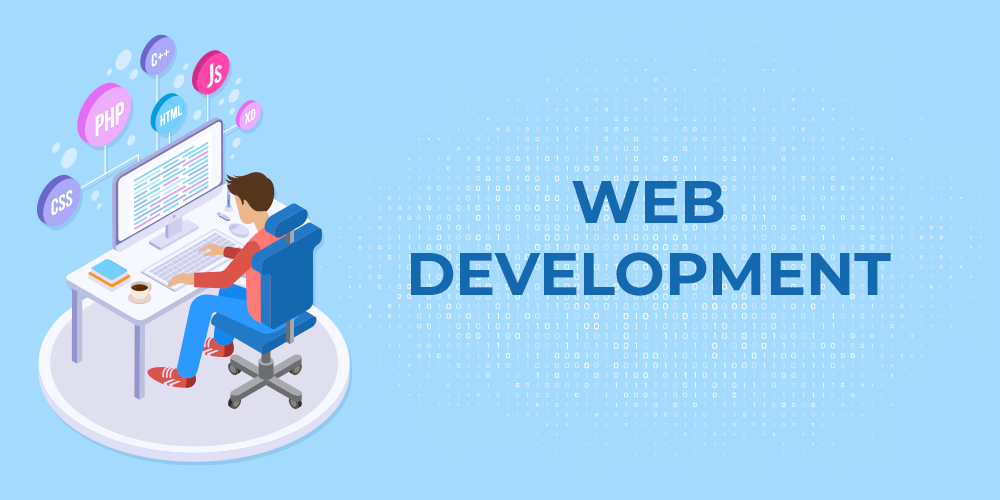Skilled Magento Web Development Perth Services You Trust.
Skilled Magento Web Development Perth Services You Trust.
Blog Article
Your Overview to Modern Web Development: Trends and Ideal Practices

Arising Technologies in Web Development
The evolution of web advancement is marked by a ruthless quest of development, driven by the need to boost customer experience and improve procedures. Emerging technologies remain to improve the landscape, offering programmers effective devices to create even more vibrant and responsive applications. Trick amongst these modern technologies are Dynamic Web Applications (PWAs), which mix the most effective of web and mobile apps, offering offline functionality and enhanced efficiency.
One more substantial advancement is the rise of Artificial Knowledge (AI) and Maker Learning (ML), which allow personalized individual experiences and data-driven decision-making. These modern technologies help with chatbots, referral systems, and boosted search capabilities, hence transforming how individuals engage with internet applications.
Moreover, the adoption of frameworks like React, Vue.js, and Angular has changed front-end development, promoting modular design and effective state management. On the backside, serverless style and microservices promote scalability and versatility, allowing designers to concentrate on creating code without managing infrastructure.
Importance of Customer Experience
User experience (UX) has actually ended up being an essential emphasis in internet advancement, particularly as emerging technologies reshape communications. A positive UX not only boosts customer contentment yet likewise drives involvement, retention, and conversions. In an increasingly competitive digital landscape, companies need to focus on UX to distinguish themselves and meet customer assumptions.
Efficient UX style is rooted in recognizing user needs and actions. This entails conducting complete research study, creating individual personalities, and using use testing to gather insights. By doing so, designers can develop instinctive user interfaces that help with seamless navigation and decrease rubbing factors.
In addition, a properly designed UX can dramatically affect a website's performance metrics. Researches have revealed that customers are most likely to abandon a website if they run into poor usability or excessive filling times. On the other hand, a streamlined, user-centric layout can lead to reduced bounce rates and boosted time invested on the website.
Embracing Responsive Style

Receptive style employs liquid grids, versatile images, and CSS media inquiries to create a dynamic format that readjusts in real-time. This approach not just boosts use yet also adds to boosted search engine positions, as search engines favor web sites that supply a constant experience throughout devices. Additionally, receptive style reduces the demand for several variations of a website, improving maintenance and updates.
Moreover, responsive style cultivates better involvement by offering a customized experience, keeping individuals on the site much longer and minimizing bounce rates. As consumer habits remains to progress, buying responsive design is crucial for companies intending to improve client complete satisfaction and drive conversions. In summary, taking on responsive style is not simply a pattern; it is a basic method that straightens with the assumptions of modern-day individuals, guaranteeing access and performance no matter the device they select to utilize.
Accessibility in Web Development
Producing a website that is both receptive and obtainable is important for reaching a broader audience. Ease of access in web advancement guarantees that all individuals, no matter their abilities or specials needs, can properly engage with electronic web content. This consists of individuals with visual, acoustic, cognitive, or electric motor impairments.

To achieve ease of access, developers need to stick to the Web Web Content Access Standards (WCAG), which continue reading this offer a structure for making internet content more perceivable, operable, easy to understand, and robust. Secret practices consist of using semantic HTML aspects, offering alternative message for pictures, ensuring adequate color contrast, and allowing Source key-board navigation.
Additionally, executing ARIA (Accessible Abundant Web Applications) features can boost availability, specifically for vibrant content and advanced user interfaces. Testing with real individuals, including those with handicaps, is crucial to recognize potential obstacles and enhance customer experience.
Inevitably, focusing on access not only boosts compliance with lawful criteria but also cultivates inclusivity, allowing organizations to attach with a broader audience. As internet advancement remains to progress, installing accessibility into the style and growth process is not just a finest practice; it is an honest responsibility that benefits every person.
The Rise of Progressive Web Applications
A substantial shift in web advancement has arised with the surge of Progressive Web Applications (PWAs), which effortlessly combine the most effective attributes of mobile applications and standard sites. perth australia web development perth. PWAs are made to provide users with a fast, dependable, and interesting experience, despite their internet link. This is achieved through service employees, which enable offline capacities and history syncing, ensuring that users can access material even in low-connectivity circumstances
PWAs likewise leverage receptive design principles, making sure that they function smoothly across a variety of devices and display sizes. This flexibility is essential in a period where consumers significantly depend on smart phones for their on the internet activities. PWAs remove the requirement for separate app shop installations, permitting for simpler and a lot more easily accessible circulation.
The benefits prolong to organizations. PWAs can lead image source to boosted individual engagement, greater conversion prices, and decreased advancement costs by preserving a solitary codebase for both web and mobile platforms. As organizations aim to improve customer experiences while maximizing performance, the adoption of Progressive Web Apps continues to grow, strengthening their standing as a vital trend in modern-day internet development.
Final Thought
To conclude, contemporary web development necessitates a complex approach that incorporates arising innovations, individual experience, receptive style, accessibility, and the application of Progressive Internet Apps. Adhering to these trends and best techniques not just enhances user engagement but also promotes inclusivity, making sure that electronic content is accessible to diverse target markets. By prioritizing these aspects, programmers can develop impactful applications that fulfill the developing requirements of customers in a progressively digital landscape.
Report this page